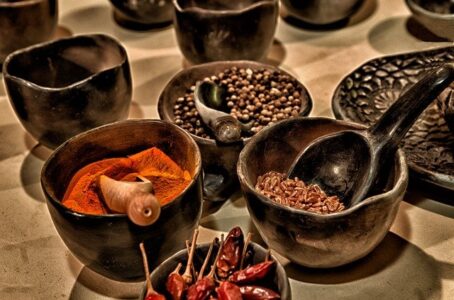One District One Focus Product Scheme
Ministry of Agriculture & Farmers Welfare
Context:
The Government has decided to converge resources from ongoing centrally sponsored schemes
Contents
Key Highlights of One District One Focus Product Scheme:
- The One District One Focus Product (ODOFP) programme cover products of agriculture and allied sectors for 728 districts of the country.
- The Government has decided to converge resources from ongoing centrally sponsored schemes such as Mission for Integrated Development of Horticulture (MIDH), National Food Security Mission (NFSM), Rashtriya Krishi Vikas Yojana (RKVY), Paramparagat Krishi Vikas Yojana (PKVY), schemes of Ministry of Fisheries, Animal Husbandry and Dairying for ODOFP.
- The Ministry of Food Processing Industries (MoFPI) provides financial support under Centrally Sponsored Pradhan Mantri Formalisation of Micro Food Processing Enterprises Scheme (PM FME Scheme) for One District One Focus Product. PM FME provides financial, technical and business support for upgradation of existing micro food processing enterprises etc.
- The scheme adopts One District One Product (ODOP) approach to reap the benefits of scale in terms of procurement of inputs, availing common services and marketing of products.
- The identified products have potential for both domestic demand and export. PM FME scheme envisages strengthening backward and forward linkages, provision of common facilities, incubation centres, training, research and development (R&D), marketing and branding.
- The enhanced capacity of processing and value addition in agriculture and allied sector products is for better price realization by the farmers.
- This scheme is being implemented for a period of five years from 2020-21 to 2024-25.
- Products – Agricultural, horticultural, animal husbandry, poultry, milk, fisheries, aquaculture, marine and processed food sectors.
- Target: $60 billion agri exports by FY22.
Mission for Integrated Development of Horticulture (MIDH):
- About: MIDH is a Centrally Sponsored Scheme for the holistic growth of the horticulture sector covering fruits, vegetables, root & tuber crops, mushrooms, spices, flowers, aromatic plants, coconut, cashew, cocoa and bamboo.
- Nodal Ministry: The Ministry of Agriculture and Farmers Welfare is implementing MIDH with effect from 2014-15.
MIDH is implemented under Green Revolution – Krishonnati Yojana. - Funding Pattern: Under MIDH, Government of India (GoI) contributes 60% of total outlay for developmental programmes in all the states except states in North East and Himalayas, 40% share is contributed by State Governments.
In the case of North Eastern States and Himalayan States, GoI contributes 90%.
About Pradhan Mantri Formalisation of Micro food processing Enterprises (PMFME)
- The Ministry of Food Processing Industry (MoFPI) launched the PMFME scheme under the Atma Nirbhar Bharat Abhiyan.
- Launched on 29th June 2020, the PMFME Scheme is currently being implemented in 35 States and Union Territories.
- The online portal for the application of the PMFME Scheme was made live on 25th January 2021.
- The aim is to enhance the competitiveness of existing individual micro-enterprises in the unorganized segment of the food processing industry and promote formalization of the sector.
- The scheme to be implemented over a period of five years from 2020-21 to 2024-25 with a total outlay of Rs.10,000 crore.
- The scheme has a special focus on supporting Groups engaged in Agri-food processing such as Farmer Producer Organizations (FPOs), Self Help Groups (SHGs) and Producers Cooperatives along their entire value chain.
One District One Product
Under the One District One Product (ODOP) component of the PMFME Scheme, the Ministry of Food Processing Industries approved ODOP for 707 districts for 35 States and UTs, including 137 unique products as per the recommendations received by States/UTs.
The GIS ODOP digital map of India has been launched to provide details of ODOP products of all the States and UTs. The digital map also has indicators for Tribal, SC, ST, and aspirational districts. It will enable stakeholders to make concerted efforts for its value chain development.
Source: PIB
You can find many articles on AGRICULTURE (part of GS III) in our website. Go through these articles share with your friends and post your views in comment section.
Discover more from Simplified UPSC
Subscribe to get the latest posts sent to your email.



